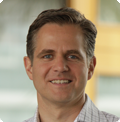 Christian
Christian
Partner & Managing Director
Day 1: Building up networks—of men and machines
We meet at the client location for the first time. "With four of us working on this project, it should be fine," I think. I know the other BCG project leader from earlier projects. We're both engineers. His specialty is aeronautics, and mine is mechanical engineering. Besides us two, there's a business manager with years of experience in production optimization, and a civil engineer who just completed his first project in the energy sector.
Our assignment: production optimization in pig-iron and crude-steel manufacturing. We compare notes: we all know the iron-coal diagram inside and out, and we are familiar with blast furnace and converter processes in both theory and practice. Our young colleague surprises us with his knowledge of the details of alternative steel-production processes. But in our first talk with the client team, it quickly becomes clear that the client doesn't expect exotic concepts, but practical and rapidly implementable solutions within the framework of the existing plant technology.
With the client project leader, we go through the schedule for the next three months. He names 20 employees from different departments as our contact people. Suddenly, a four-person team doesn't seem like much…. But at least our office in the team room is now set up. The WLAN is functioning, and printers and fax machines have been installed—engineers should at least be able to manage that. And after we've familiarized ourselves with the telephone system the client provided, we're ready to get started.
Day 20: Feeling the heat—and stopping the salamander
We've had some hot days. But it wasn't the blast furnaces that beaded our foreheads with sweat—it was the heated discussions of how the client's current production processes could be further improved. The company has been working on this for decades, and our challenge now is to find even more long-term potential in production.
We meet weekly with the client team to present intermediate results and consult on what to do next. Today, at our third "jour fixe," we reached a decisive milestone: our analyses are pointing in the right direction. Even more importantly, some of the originally more skeptical members of the client team are starting to get really enthused about the project.
Together, we discuss how the plants could be operated more consistently and efficiently and how the current mathematical process models could be enhanced. The cost of these changes sparks an intense debate. The search for the "cost eutectic" will be harder than we thought. It takes two hours to agree on exactly how to determine the marginal costs of crude-steel production.
And then there's the salamander. A murmur goes through the ranks. Later, we find out that this volatile compound—a mass of iron that accumulates at the bottom of a blast furnace as a result of the escape of molten metal through the hearth—must be avoided at all costs!
The last day: crossing the finish line together
We did it! After countless data analyses; after discussions of the coking process, iron ore types, and raw-materials procurement strategies; after interviews with experts in Europe, Asia, and the U.S.; and after phases of euphoria but also frustration, we actually found a way to significantly lower the production costs of pig iron and crude steel.
Together with the client team, we present our results to an impressed board of directors—all of them engineers and experts in the field. After working together so closely for months, we've developed a real camaraderie with the client team.
All of us are proud of what we have achieved—and both sides learned a lot. As a memento, not only of working together on the project but also of rooting for each other’s teams during the European Cup, the BCG team receives a Tipp-Kick game set bearing the client's company logo. Needless to say, the set is 100 percent steel!
Christian's Background
Christian is a partner and managing director. He is the Operations node for the Germany & Austria system and the regional practice area leader for Central and Eastern Europe, the Middle East, and South Africa; part of the Lean Advantage Experts' network, and a core member of the Industrial Goods practice. Christian's experience includes many strategy and restructuring cases, including turnaround, profit improvement, working capital management, reorganization, and large-scale program management.
Prior to joining the firm, Christian worked for more than seven years in the industrial turbine and compressor division of Mannesmann Demag (today part of Siemens AG), where he held positions as a project director and product manager. He was actively involved in the worldwide reorganization of the company, designed and launched a new product program with his team, and led several large-scale engineering projects in the chemical and oil industry.
Christian holds a degree in mechanical engineering with specialization in aeronautics from the University of Braunschweig (Germany) and the University of Bordeaux (France). He also holds an MBA from ESCP-EAP in Paris.